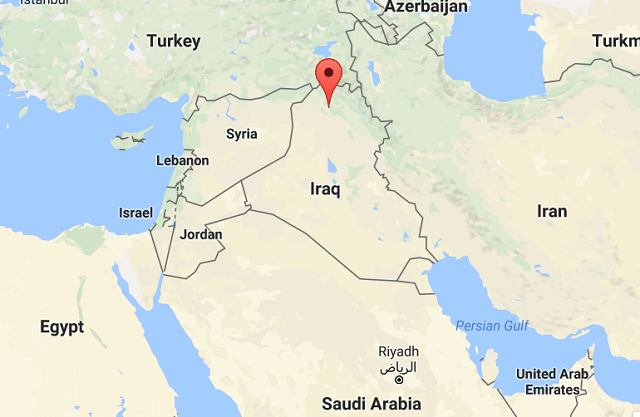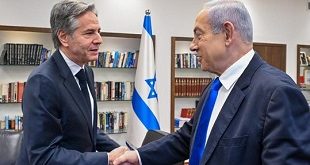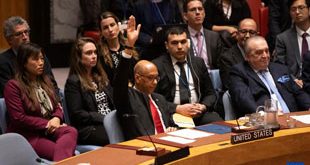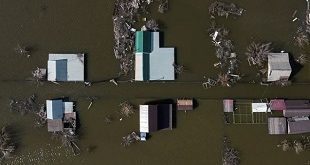
Washington, United States | AFP |
The offensive to recapture Mosul from Islamic State jihadists has so far progressed faster than planners anticipated, but military experts fear the fighting could get tougher as US-backed Iraqi forces enter the city.
Here is an overview of some factors determining the size and length of the battle.
Will IS defend Mosul at any cost?
Jihadists in Mosul are expected to put up a fierce fight. The city is the supposed capital of their self-declared “caliphate,” and IS has had more than two years to solidify defenses.
Additionally, many of the estimated 3,500 to 5,000 jihadists are foreign. They have few options but to fight to the end, and blending into a fleeing population is difficult.
Still, their behavior is hard to predict.
“I don’t know why they’d defend until the end land that is not theirs,” one coalition official said.
At the end of 2015, an offensive to retake Ramadi from IS lasted months, and the city was largely destroyed by coalition bombing and fighting.
But in Fallujah, a Sunni stronghold west of Baghdad that Iraqi forces recaptured earlier this year, IS resistance was lighter than expected.
And in other cities, such as Dabiq in Syria last week, IS offered little resistance.
What are the strengths of IS?
Iraqi forces expect snipers, countless mines and booby traps, and sneak attacks from jihadists hiding in a network of tunnels.
The jihadists might use “indirect fire” such as mortar rounds, but such weapons leave a tell-tale heat signature so could immediately be struck by coalition air assets.
Perhaps the deadliest weapon IS has at its disposal is a ready supply of fighters willing to die for their cause. The group has already sent several suicide car bombers racing towards advancing Kurdish forces.
“You can expect every imaginable place will be booby-trapped and mined, and that suicide attackers and counter-attackers with suicide vehicles will be a common part of their plans for defending Mosul,” said David Barno, a retired general who once led the US war effort in Afghanistan.
In an attempt to cover their movements around Mosul, the jihadists are igniting pits filled with oil and tires to make clouds of thick smoke. US officials say the smoke has had no adverse tactical effect on operations.
One important advantage for IS: The hundreds of thousands of civilians trapped in the city, who together form a massive human shield making it harder for the US-led coalition to conduct drone and plane strikes.
“The US is going to be very discriminate in using air power,” said Barno, now based at American University.
“It won’t look anything like Aleppo and what the Russians and Syrian air force has done there.”
IS fighters could exploit civilian deaths for propaganda purposes and stoke anti-government sentiment among the Sunni-majority population.
Finally, IS has been developing chemical weapons. Western officials however say these are rudimentary, and pose more of a psychological threat than anything.
How strong are the Iraqi and coalition forces?
The Iraqis have overwhelming tactical advantages in terms of troop numbers and equipment. They also have continual air and intelligence support from the US-backed coalition.
So far, at least 30,000 Iraqi and Kurdish peshmerga forces are involved in the battle, with tens of thousands more ready to follow into them into Mosul.
By contrast, IS has only between 3,500 and 5,000 fighters left in the city, according to the latest estimates.
Though the Iraqi army largely collapsed in the face of the IS advance in 2014, the coalition has since trained each soldier going into Mosul, and a string of victories across the country has given the troops new and growing confidence.
Their training has incorporated lessons learned from previous victories over IS in Iraq, including in Fallujah and Ramadi.
Iraqi special operations forces have also proven themselves in previous battles.
The Iraqis’ biggest advantage, however, is coalition air support. Troops on the ground have access to live video streams from drones showing what is happening in the city, and are able to work with coalition forces to call in air strikes at a moment’s notice.
The Pentagon also expects some residents to take up arms against their IS captors as Iraqi troops close in.
Coalition strengths
Besides air strikes, the coalition is helping coordinate troop movements on the ground and logistics.
Coalition troops will provide “help synchronizing the multiple units involved in the attack so as to achieve sufficient unity of effort and coherency of action,” said Jim Dubik, a former general and professor at Georgetown University.
The Americans also have more than 100 military advisers working close to the front lines, helping Iraqis call in air strikes.
The coalition is ready to use Apache attack helicopters and precision-rocket launchers.
Additionally, Pentagon cyber warriors are working to spy on the jihadists and disrupt their computer networks.
 The Independent Uganda: You get the Truth we Pay the Price
The Independent Uganda: You get the Truth we Pay the Price


